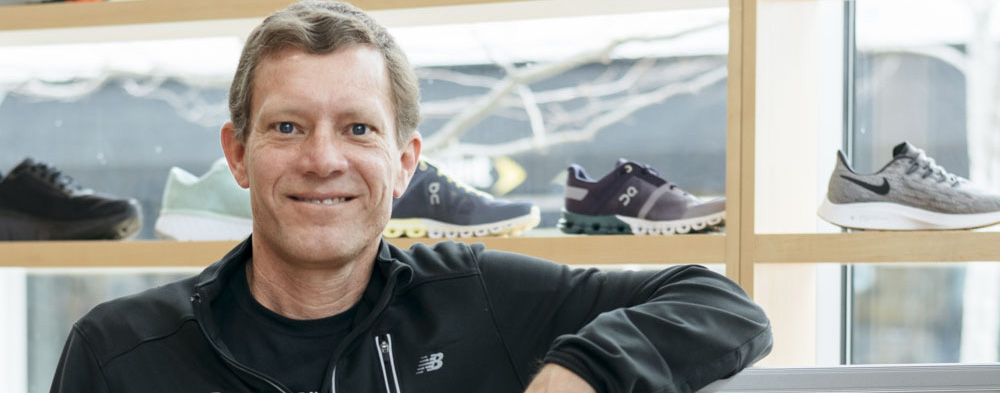My wife, Cathy, and I own and operate a chain of 10 specialty running stores in the Washington, D.C., area. Even though we sold products online before the COVID-19 pandemic, they made up only 1.2% of our total sales. The rest were made in our stores.
So in the first few weeks of the pandemic, our revenue fell 70% to 80% per day compared to the same days a year earlier. We knew we had to make changes—and fast—to the way we do business to maintain our customers’ trust and loyalty and ultimately keep our retail operations alive.
Staying one step ahead
When stay-at-home orders took effect in March, our first priority was keeping our customers up to speed on our plans. Over the prior 18 months, we had worked with platforms such as Upper Quadrant and Numa to integrate our point-of-sale data with our social media outreach and digital communications. As a result, we already had a process in place to distribute targeted messages to all of our customers and followers. Through this integration, we can send out information relevant to each customer based on their past purchase history and customer profile data. By looking at click-through metrics, open rates and sales data from online and brick-and-mortar visits, we can prove to ourselves and our vendors what marketing campaigns are really working and resonating with customers during the pandemic.
Thankfully, we also had a fully functional online store when we had to temporarily close our brick-and-mortar store in D.C. and restrict in-store customer access to our Virginia stores due to the government orders. Most independent running stores don’t have a major online retail presence, and before the pandemic, we had questioned whether the investment was worth it. In hindsight, we are grateful that we didn’t have to quickly figure out how to manage online retail once the pandemic hit.
On our store website, we added a “shopping hub” to inform consumers of the various ways they could safely shop with us. We allowed our customers to self-select among three groups: Shoppers who were willing to schedule an appointment to come into the store for a socially distant, personalized fitting; those who would prefer curbside pickup services; and those who wanted to do everything from home.
For the stay-at-home shopper, we developed a completely virtual shoe-fitting process. Using Zoom and Calendly, customers can schedule a video or phone appointment. One of our expert staff members walks them through the entire fitting process. We can analyze their gait over Zoom or smartphone cameras, send them forms to print out so they draw an outline of their feet for accurate sizing, and then show them a selection of shoes that we would recommend based on their goals. They can pay securely online, and we’ll send out their order that day.
For our curbside service, we leveraged Numa, a virtual answering service that turns voicemails into text messages—and something we were already using before the pandemic to make sure we never missed a customer call. Customers call or text us their orders and prepay for their items. We text them when their packages are ready, and they text us when they’re out front for pickup.
Going the distance
As stay-at-home orders started lifting in June, we had to redesign our stores to accommodate social-distancing requirements. That meant removing a lot of product from the sales floor. Since we had to close our dressing rooms, we eliminated most of our apparel so we could move fitting stations farther apart.
We then repositioned the remaining merchandise, such as water bottles and socks, to make them more visible from the fitting stations. We also reconfigured our checkout systems so that people wouldn’t be too close together while waiting in line.
We also bought additional iPads, which we use for the video gait analysis, so employees wouldn’t have to pass them around as much, and we upgraded our wireless systems to help our staff be more efficient.
Hitting our stride
To be honest, the initial impact of the pandemic was scary beyond belief. We were scrambling to submit our application for the Payroll Protection Program (PPP) loan and working out payment plans with our landlords and vendors because our cash flow had dried up. Our online sales helped us pay our staff and our credit card bills, but that was about it.
By July, sales really started picking up at our Virginia stores. Then we took another big financial hit: August is usually our biggest sales month of the year due to the start of the fall school sports season. But all the schools in our area canceled their fall sports this year.
Overall, though, our seasonally adjusted revenue has rebounded to about 85% to 90% of our pre-COVID sales in our Virginia stores. And online sales now make up 9% of our total sales. Our customer counts are down, but our revenue per transaction is up, because those who do come in are primarily buying shoes—our biggest-ticket items.
Our downtown D.C. store is really struggling, though. That location is dependent on tourists and office workers, but the occupancy rate for downtown office buildings is around 5% and the tourist industry has ground to a halt.
The one thing that helps me sleep at night is that the percentage of shoppers coming in that are new customers has gone way up as more people take up running. When we get back to normal times—assuming most of those new customers keep running—12 months from now sales could be greater than they were pre-COVID.
Print this article



0 Comments